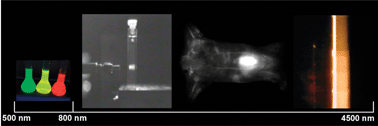The chemistry, material processing and fundamental understanding of colloidal semiconductor nanocrystals (quantum dots) are advancing at an astounding rate, bringing the prospects of widespread commercialization of these novel and exciting materials ever closer. Interest in narrow bandgap nanocrystals in particular has intensified in recent years, and the results of research worldwide point to the realistic prospects of applications for these materials in solar cells, infrared optoelectronics (e.g. lasers, optical modulators, photodetectors and photoimaging devices), low cost/large format microelectronics, and in biological imaging and biosensor systems to name only some technologies. Improvements in fundamental understanding and material quality are built on a vast body of experience spread over many different methods of colloidal synthetic growth, each with their own strengths and weaknesses for different materials and sometimes with regard to particular applications. The nanocrystal growth expertise is matched by a rapidly expanding, and highly interdisciplinary, understanding of how best to assemble these materials into films or hybrid composites and thereby into useful devices, and again there are many different strategies that can be adopted. In this review we have attempted to survey and compare the recent work on colloidal synthesis, film and nanocrystal composite material fabrication, concentrating on narrow bandgap chalcogenide materials and some of their topical applications in the solar energy and biological fields. Since these applications are attracting rising interest across a wide range of disciplines, from the biological sciences, device engineering, and materials processing fields as well as the physics and synthetic chemistry communities, we have endeavoured to make the review of these narrow bandgap nanomaterials both comprehensive and accessible to newcomers to the area.


 Please wait while we load your content...
Please wait while we load your content...